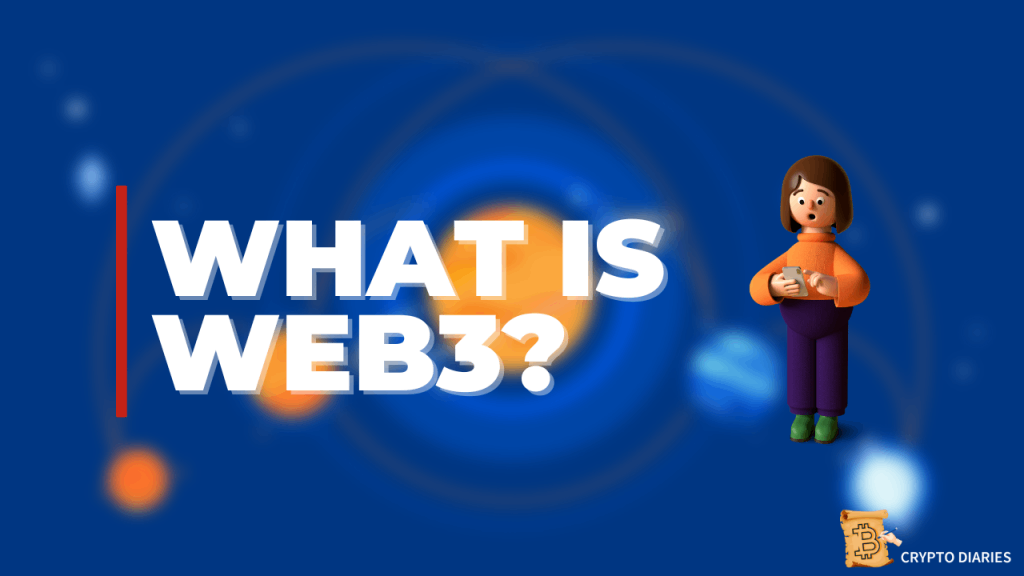Over the years, technology has managed to revolutionize billions of lives with its cutting-edge solutions. Among the breakthroughs that modified everything is the internet. Simply put, the World Wide Web (WWW) represents an important tool that enables people to communicate and interact.
Web 1.0 became the first generation of the internet. At this stage, users were mostly consumers and information got to readers through a static file system. Additionally, the data/information existed in graphic or text formats.
Years later, Web 2.0 became the second generation of the internet. This version proved to be more dynamic, interactive, and user-friendly to people. Web 2.0 is also the current version of the internet today, which primarily focuses on interoperability, connectivity, and interactions.
Web 3.0: The Upcoming Era
Web3, commonly known as the Semantic web, will become the third generation of the internet. This web combines several features from the first and second generations, making it possible for users to write, read, and own data.
Ideally, Web3 is a decentralized internet that runs on blockchain technology. This idea was originally introduced by Berne-Lee in 2001 through a publication. According to him, the current internet has a massive communication gap between humans and machines. Hence, his proposal for the problem was a web that is readable by machines and humans.
While the idea seemed far-fetched, certain aspects of the proposal were already in motion. Decentralization is one feature that corresponds with Berne-Lee’s proposal of the next-gen internet. So how does Web 3 embrace decentralization?
Web3 and Decentralization
In the context of blockchains, decentralization refers to an ecosystem that eliminates the need for centralized bodies. The system gives community members the authority to control and make decisions in a blockchain network.
The current internet (Web2) is designed and powered by major tech companies. This fact makes Web2 centralized since prominent companies run massive servers and own almost every piece of data. Thus, a handful of players control most platforms and services available on the internet.
Web3 anticipates changing this narrative by integrating decentralization. It plans to restore the control of data to users and withdraw that power from large corporations. Rather than relying on big tech companies, Web3 will allow users to interact with other people in a peer-to-peer environment. Content creators can directly interact with their audience without fear of being censored.
How Web3 Works
In theory, Web3 aims to eliminate third-party interventions. For instance, the decentralized internet will be able to link riders directly with drivers. From this example, all payments will go to the driver and not the corporation that connects the drivers and customers.
Web3 expects to replace these intermediaries with decentralized applications (DApps). The apps run on blockchains and enforce smart contracts to execute agreements. Thus, these applications are not owned by any single entity. Decentralized applications have added benefits that traditional apps lack. The protocols are mostly open source, which makes it easier for developers to build DApps using another project’s code. Furthermore, DApps can incorporate digital currencies as payment mediums.
Decentralized autonomous organizations (DAOs) are also part of the Web3 infrastructure. It represents a group of users who exercise oversight and management of a decentralized ecosystem. Under this system, users can make proposals and vote on the most suitable action that benefits a DApp protocol.
Web3 looks forward to applying this system to illustrate collective ownership. In that regard, such an organization will replace big companies that run and own platforms.
Components that Makeup Web3
Web3 has multiple components that set it apart from the previous internet versions. Some of the technological features found on Web3 include:
Semantic Web
In layman’s terms, semantics refers to the study of meaning or truth in a word or sentence. Today, individuals can perform different tasks like online shopping and booking a flight on the web. However, machines may find it difficult to execute these tasks without human intervention. This scenario is possible because web pages are only readable by humans.
A semantic web acts as a convenient solution to this problem. The concept lets machines process and interpret user data. That way, machines can perform human tasks, explore, and act upon any information available on the web.
In general, the main goal of semantics in Web3 is to trigger an internet where users search, join, and share data with minimum effort. The technology will attempt to translate the true meaning of words instead of understanding numbers and keywords.
Artificial Intelligence
Artificial intelligence (AI) is a popular advancement in the tech industry. The concept is primarily concerned with designing smart machines that can execute tasks.
In Web3, the presence of AIs helps computers understand information like a regular person. Implementing AI on Web3 could attract various advantages in the long run. For one, the advancement may aid in bypassing several malicious practices like biased reviews and manipulation of data.
As a bonus, smart machines can help draw a line between fake and genuine information on the internet. Having AIs on Web3 enables users to receive fast, accurate, and more productive results.
3D Graphics
Another component that drives the Web3 internet is the 3D graphical representation. This feature is expected to enhance spatial computing, a procedure that uses digital tech to initiate interactions between computers. The process blends digital technologies like virtual reality (VR), augmented reality (AR), and mixed reality (MR).
Web3 looks forward to incorporating 3D graphics in its infrastructure. As a matter of fact, tech experts hail this internet as the spatial web since it can bridge the real world with the virtual world. Hence, 3D designs could become a common feature of Web3 apps and services.
Ubiquity
The fourth feature is ubiquity, a component that explains the omnipresent nature of Web3. This fact means that users can access internet content anywhere, anytime. As such, Web3 will promote seamless connectivity among individuals and their devices.
The upcoming internet could also enhance its connectivity through IoT (Internet of Things) sensors. Leveraging IoT will let individuals access the internet regardless of the type of device in use.
The Advantages of Using Web3
As mentioned earlier, the Web3 internet will not involve intermediaries since every functionality runs on a peer-to-peer system. This key advantage minimizes government intervention, censorship, and stacking up data in central servers.
Getting accurate search results is another advantage that Web3 presents. In the current internet, finding the most precise result on search engines can be a daunting task. Thanks to the semantic component, Web3 users will obtain specific information they require with little or no effort. Such an advantage promotes convenient web browsing as browsers ultimately get what they want.
The other potential advantage of Web3 is that it could improve the quality of customer support. Without a doubt, customer services aid in promoting positive user experience on websites. Despite that, high expenses hinder these websites from expanding and improving their customer services. Web3 plans to tackle this issue with intelligent chatbots. These bots can communicate with multiple consumers and offer assistance on any issue related to the website.
The issue of censorship continues to surface on the current Web2 internet. This factor inhibits the freedom of expression as users are banned from relaying certain information. Users are now seeking refuge in Web3 protocols to take advantage of the internet’s censorship-resistant feature.
In Web3, content creators can publish their articles through blockchain domains and hosting services. Therefore, domains running on these services cannot be scrapped off the internet since they reside on decentralized blockchains.
Disadvantages
Some of the disadvantages associated with Web3 include:
Barriers to Entry
As a new entrant in the tech field, Web3 could become increasingly difficult to grasp. Most individuals aren’t familiar with how some concepts work in the crypto industry. For example, some users may find it challenging to set up a digital wallet. In some cases, decentralized applications might not have an appropriate description of how their protocols work.
What’s more, users have to keep up with every information related to blockchains and digital assets. Without that kind of knowledge, catching up with this dynamic industry can be a hassle. Such problems make it difficult to interact with Web3 as users are not well informed.
Regulatory Pressure
Regulatory bodies may begin to question the future of Web3 because there is no governing authority. In the end, lawmakers will interfere with the new internet as there is no entity enforcing policies in this ecosystem.
AIs and ML Advancements Create Unemployment
Rolling out artificial intelligence and machine learning concepts can lower the employment rates in the crypto industry. While both technologies have a positive impact on Web3, they could render current jobs obsolete.
On the bright side, developers and programmers will access jobs to build blockchains and digital assets. Even so, there will be an employment limit since AIs can represent human employees at a lower cost.
Negative Impacts on Mental Health
Web3 could affect an individual’s mental health since it’s closely associated with the metaverse. A metaverse works as an immersive digital experience where users can play games, attend events, or even host meetings. The concept applies AR and VR technologies to achieve its objectives.
Spending too much time on Web3 and the metaverse can be detrimental to an individual’s health. On one side, users may develop unrealistic life expectations due to the magnified version of reality. Others may opt to remain in the metaverse and spend little time in the real world. Hence, constant use of Web3 metaverse platforms may harm a user’s overall health.
Conclusion
The internet has come a long way since its inception in 1991. This advancement continues to reshape how users interact and share information with each other. Shifting to Web3 can massively impact how individuals view the internet.
It hopes to include components like semantics, AIs, blockchain, and 3D graphics as part of its guiding principles. While it may not be certain how far Web3 will go, various aspects of this internet are already in play.

